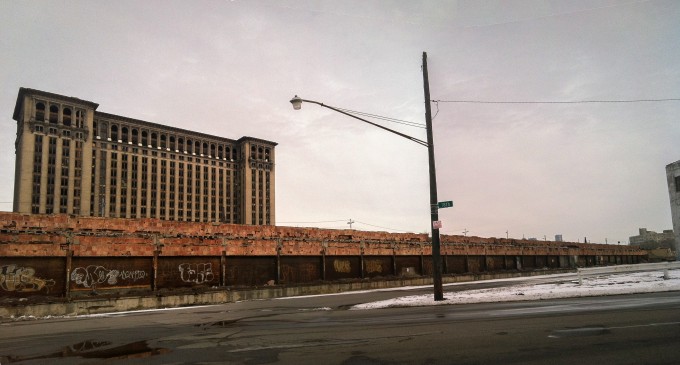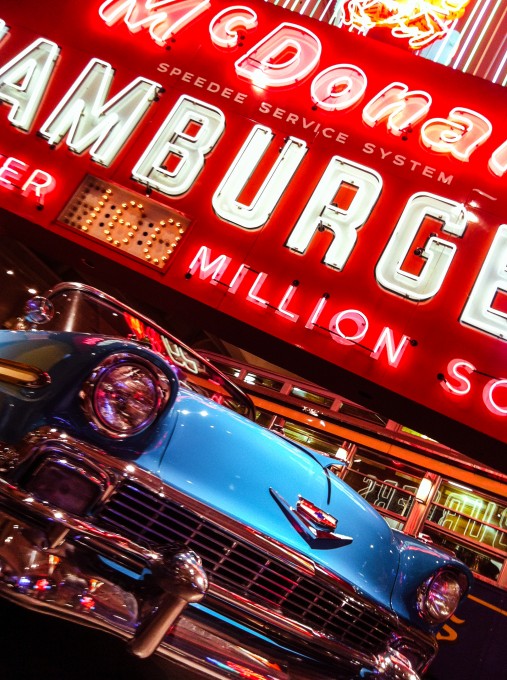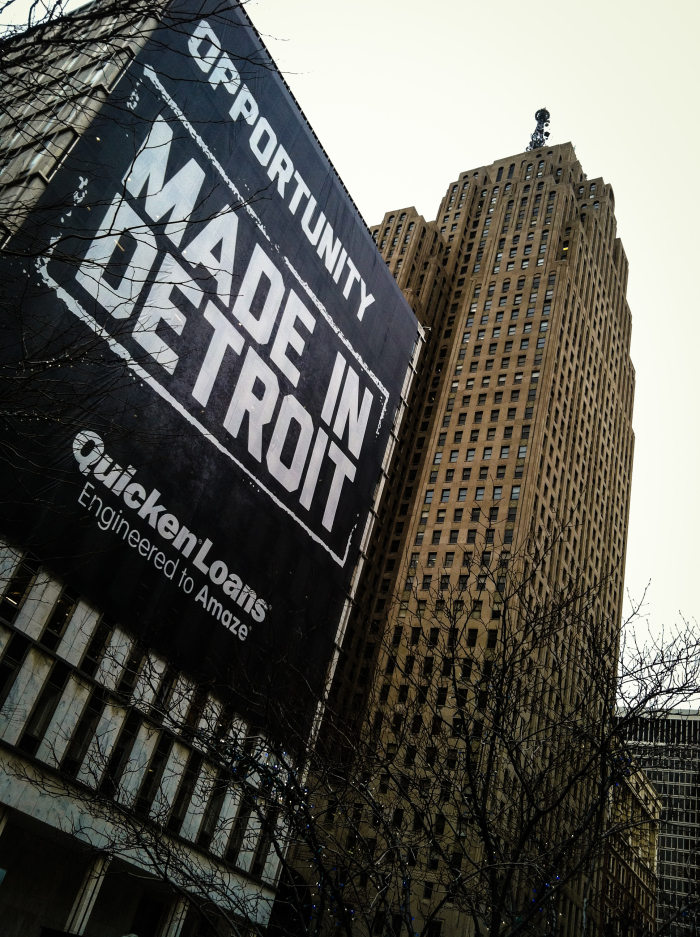By Charlie Payne
In early February I traveled to Detroit to embark on the first leg of a three-part Xref journey to study cities as living organisms in various stages of life, and the role that architecture plays in those stages. Detroit, of course, has fallen on extremely difficult times. It’s often regarded as one of the worst urban tragedies of the nation, perhaps one of the worst in the world, and thus the city was (originally) representative of the “death” of the city organism.

Michigan Grand Central Station, an iconic symbol of the Detroit’s grandiose past and troubled present.
During my stay I made a point to try and experience all the things that make a city a city; its neighborhoods, commercial centers, parks, bars, restaurants, museums and universities. Given my limited time and the immensity of the project scope, I had to make the most of each day. I toured Belle Isle Park, known as the “Jewel of Detroit,” and spent an entire day at the Ford River Rouge Factory. I saw a show at the historic Fox Theater and spent an afternoon in the GM World Headquarters Complex, the Renaissance Center. I traveled far and wide across the city and witnessed first-hand the beauty and the blight of Detroit’s neighborhoods. I even had the chance to visit the Motown Museum, Hitsville USA, where artists by the likes of Marvin Gaye, Stevie Wonder, The Temptations, and The Supremes all got their start. Despite the short duration of the trip, I came home with a sense that I had witnessed the genuine, gritty Detroit, even if just for a glimpse.


Left: The Belle Isle Conservatory, Right: The Henry Ford Museum
The reasons for the decline of Detroit are well known. Over the past century, government corruption, the faltering auto industry, and social strife has left the city in tatters. What was interesting, however, was not how hard or why the city had fallen—but the realization that the Detroit we know is most likely already gone for good and something new is rising from the ashes. My last blog post, “Detroit: Final thoughts” summarizes it best:
 Whether by the forces of government mandate or by the natural exodus of the population, Detroit is currently and will continue to experience rapid downsizing. Entire neighborhoods have been swept away and returned to the same pastoral state as when they were founded. The auto industry that was once the lifeblood of the economy has moved on. The Detroit we think we know, the Detroit remembered by history, may be gone forever, recognizable today by only its namesake.
Whether by the forces of government mandate or by the natural exodus of the population, Detroit is currently and will continue to experience rapid downsizing. Entire neighborhoods have been swept away and returned to the same pastoral state as when they were founded. The auto industry that was once the lifeblood of the economy has moved on. The Detroit we think we know, the Detroit remembered by history, may be gone forever, recognizable today by only its namesake.
Maybe the better question is what comes after the death of a city? Opportunity? Hope? Pride? Of all the Detroiters I spoke with, no words were used more frequently than these. You can do anything here, anything special, and you’ll be noticed. New projects are on the horizon, new industries are taking root. Some neighborhoods are even growing again. This city has a resilience that never quits, a fire that won’t be put out, not by bankruptcy, nor racism, nor failed government.
For the full story and to see the photos from Detroit, visit the project blog:
www.thelifeofthecity.wordpress.com
